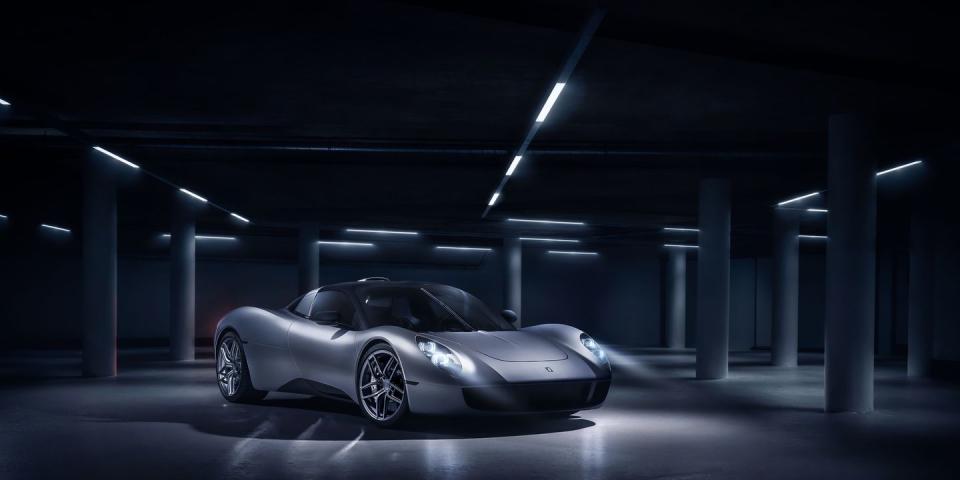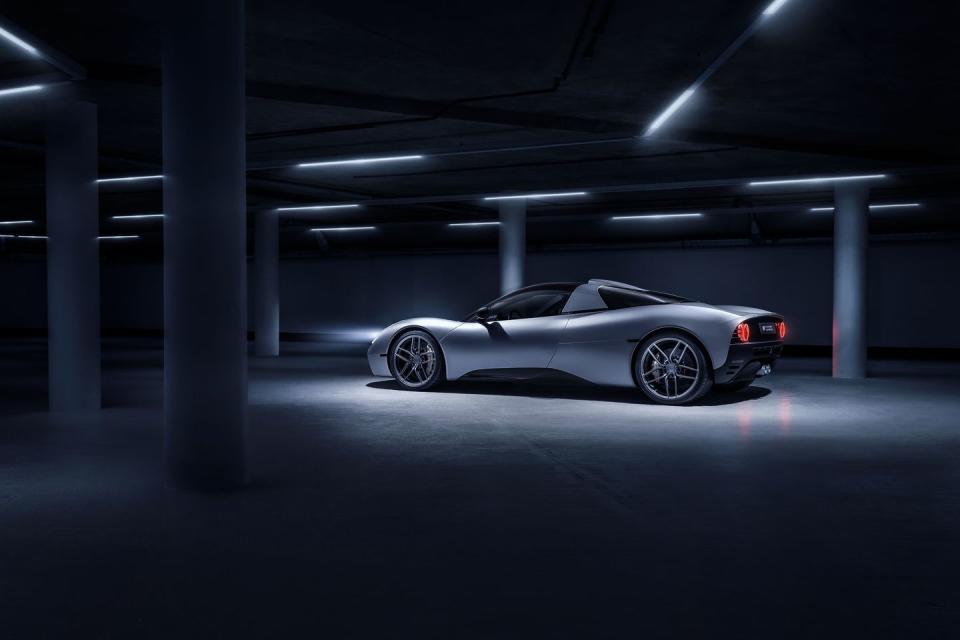Gordon Murray Reveals His T.33 “Super GT”

The T.33 is the second supercar from Gordon Murray Automotive after the amazing T.50.
The T.33 uses a detuned version of the 4.0-liter naturally aspirated V12 from the T.50 but sits on a different core structure to the stablemate, with a central monocoque that uses honeycomb carbon-fiber pieces bonded into an aluminum frame. It offers the choice of a manual or automated gearbox.
Like with the T.50, only 100 examples will be built, with each asking about $1.85 million.
The T.33 you see here is GMA’s second road-going supercar, following on from the T.50 that was launched in 2020. Compared to its predecessor—although almost nothing else—the T.33 is definitely an understudy, a car designed for a different part of the market. So while the T.50 took obvious inspiration from Murray’s most famous street-legal design, the McLaren F1, with its central driving position, the T.33 has a more conventional two-seat design. The new car has also lost the T.50’s 48V active aerodynamics and has gained weight, although it is still lighter than any rival: Murray says the T.33 is on track to weigh 2400 lbs, versus the T.50’s 2620 lbs. The new car keeps both the V12 powerplant and the option of a manual gearbox, and gains several other new innovations. Just 100 T.33s will be built, for £1.37m (about $1.85 million) each—that’s £1m less than the T.50.

Autoweek got the chance to talk to Murray alongside the T.33 design concept in an underground parking garage at what is going to become GMA’s new HQ in Surrey, England. The first question was meant to be a simple one: Why is the T.33 following the T.50?
“Because when I thought, ‘one day I might do my own car,’ I went through the numbers with Kev Richards, who is now my creative director, and we banked some we liked the sound of,” Murray says. “T.50 was a nice, round number—and we ended up using it to mark 50 years of car design. But the reason we kept T.33 was because I said to Kev that if we’re going to do our own car, it has to have a small capacity engine and I wanted to do a 3.3-liter car. This was five or six years ago.”
When Murray spoke to Cosworth about creating the high-revving naturally aspirated V12 engine GMA would use, the plan encountered a problem: The proposed capacity wouldn’t give enough power. So the engine increased to 4.0-liters, but Murray liked the name so much he decided to keep it.
The V12 is probably the least new component, keeping the same block and heads as the T.50 as well as gear-driven camshafts, but these having less extreme timings, a slightly reduced rev limit, and the torque curve lowered to improve drivability. These things are relative, of course—the T.33’s peak 606 bhp still arrives at a heady 10,500 rpm, and the engine limiter is set at 11,100 rpm, 1000 rpm shy of the T.50’s. Maximum torque is a 332 lb-ft, and although that comes at 9000 rpm, Cosworth say that 75% of that total is available from just 2500 rpm.
“What they’ve achieved blows my mind,” Murray says, “in the ‘60s if an engine went to 12,000 rpm—and none did—then there would have been nothing at all below 8000 rpm.”
GMA will offer the choice of a manual or automated gearbox, both built by British specialist Xtrac. The six-speed manual is the same one fitted to the T.50, and will be come either with or without an overdriven sixth gear for more relaxed cruising. The automated one uses Xtrac’s very clever Instantaneous Gearchange System, which allows the selection of two ratios simultaneously (and then toggled by a ratchet mechanism) to give truly seamless shifting. But although the paddle-shift transmission will be both quicker and lighter—amazingly, it weighs 8.8 lbs less than the full manual—early enthusiasm from potential buyers has been muted.
“I may well have shot myself in the foot,” Murray says, laughing, “because we’ve presold half the cars already, and so far have only had two people order a paddle shift. So I’ve committed myself to millions of pounds in development spend and could end up with 97 manuals and three autos.”

 Yahoo Autos
Yahoo Autos 